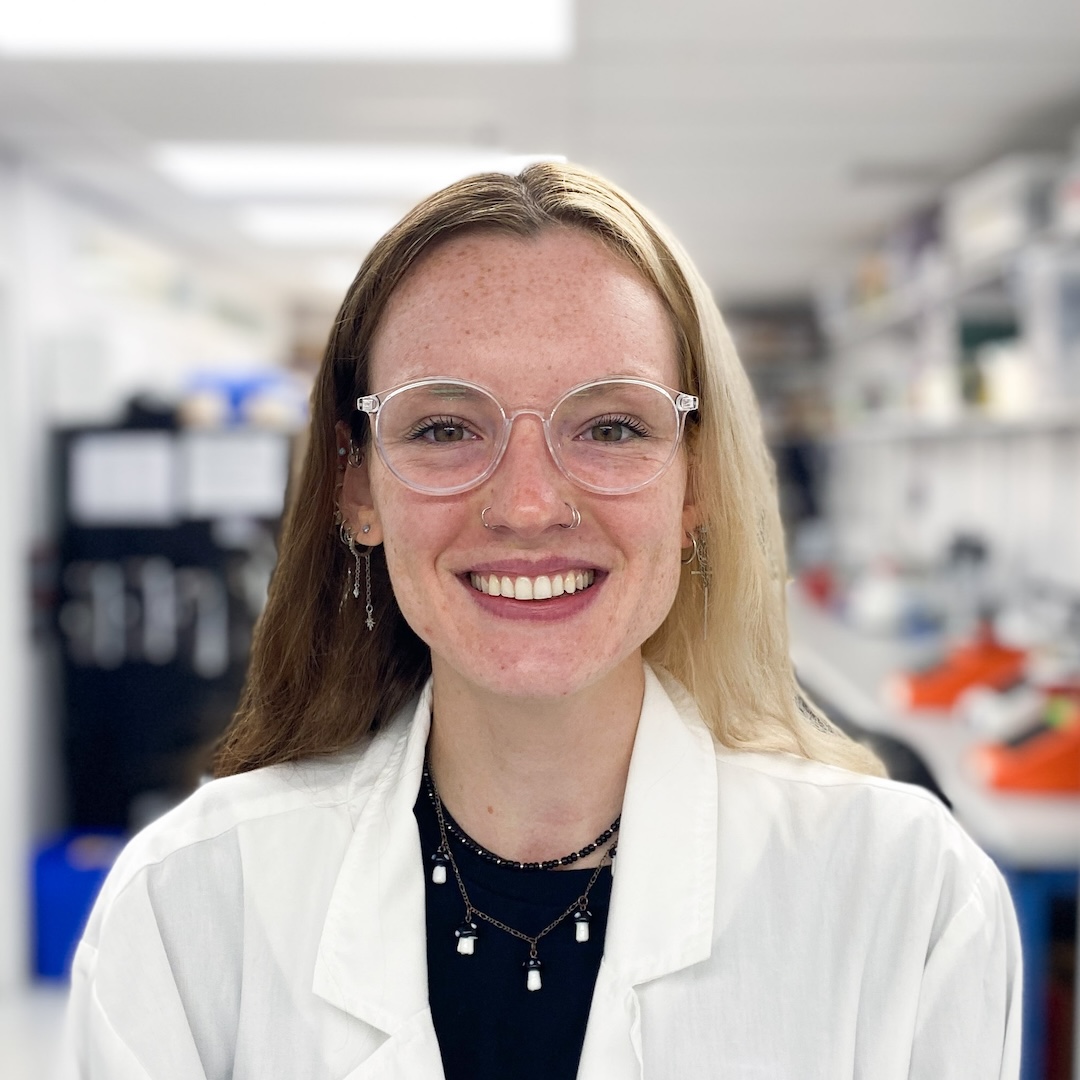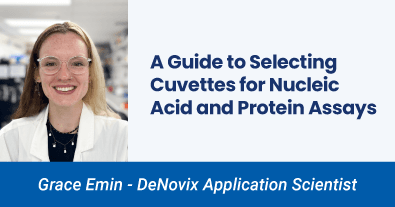Written by Grace Emin, DeNovix Application Scientist
Microvolume spectrophotometers measure absorbance from sample volumes as low as 1µL without requiring cuvettes. However, cuvette UV-Vis measurement is essential when working with larger volumes (micro- and semi-micro volumes), kinetic studies, or measuring samples that require temperature control or mixing. These are functions that microvolume platforms are not typically optimized for. DS-Series Spectrophotometers, however, can accommodate both.
The absorbance of proteins, nucleic acids, or small molecules can be measured with your lab’s standard cuvette format with the DS-Series Spectrophotometers. These instruments offer both microvolume and cuvette UV-Vis options. To get consistent and accurate readings, match your material (glass cuvettes, quartz cuvettes, or plastic cuvettes) to your sample’s properties and your wavelength range.
UV-Range Applications: Nucleic Acids and Protein A280
Both proteins and nucleic acids absorb light most strongly in the UV range. Nucleic acids such as DNA and RNA have the strongest absorption at 260 nm, proteins at 280 nm, and peptides at 205 nm or 215 nm.
It is necessary to ensure the material of the cuvette allows for transparency in the UV range.
If the cuvette composition absorbs light at the same wavelengths as DNA, RNA, or protein, then the absorbance measurements may be inaccurate and overestimated.
Visible-Range Applications: Colorimetric Protein Assays
Depending on the purity, concentration, and composition of protein samples, another common method for quantification is colorimetric assays. These assays produce a color change in the visible range that is proportional to the concentration of the sample.
The DS-Series has several of the most common assays preprogrammed, including:
- Bradford Assay (measures absorbance at 595 nm)
- BCA Assay (measures absorbance at 562 nm)
- Lowry Assay (measures absorbance at 750 nm)
Common Cuvette Compositions and Their Compatibility
Fused Silica1,2
A type of synthetic glass material made from silicon dioxide. Its key features are:
- Optimal for UV: Since it is synthetically produced, it can be manufactured with low impurity levels. This makes it optimal for sensitive applications and high precision nucleic acid measurements.
- High Durability: Chemical and thermal resistance make it an overall inert material, allowing for a wider range of applications and durability for long term use.
- Transparency: It is transparent to the UV range, down to 190 nm.
Quartz1
Quartz glass refers to glass materials made from natural quartz crystal or high-purity silica sources. Its key features are:
- Transparency: It is transparent to the UV range, down to 190 nm, but generally less transparent than fused silica due to impurities that can interfere with absorbance in the UV spectrum.
- Affordable: A less expensive alternative to fused silica that is still suitable for routine nucleic acid quantifications.
Plastic (Polystyrene, PMMA)
Plastic cuvettes are typically disposable and composed of either polystyrene or polymethyl methacrylate (PMMA). Features:
- Poor UV Transparency: Most plastics do not transmit light well below 300nm. Check carefully the properties of the cuvettes to confirm application compatibility.
- Low Durability: Low chemical and thermal resistance.
- Best for non-UV Applications: Appropriate for OD600 and protein colorimetric assays (such as Bradford at 595 nm, BCA at 562 nm).
- Affordability: Most affordable option, but they are usually single-use. Ongoing costs should be considered.
To ensure accurate readings when using the cuvette option on a DS-Series Spectrophotometer, researchers must select an appropriate cuvette based on factors such as transparency, thermal and chemical resistance, and affordability. It may be necessary to have multiple cuvette types available in a lab, depending on the range of applications being studied.
Learn more about DeNovix DS-Series Spectrophotometers.
References

Grace Emin
DeNovix Application Scientist
Grace Emin has been an Application Scientist at DeNovix Inc. since 2023. She graduated with a Master’s Degree in Biological Sciences with a Focus on Biomaterial Engineering and Disease Models. At DeNovix, Grace contributes to application and product development, as well as technical support, with expertise in imaging, assay development, and machine learning applications. When she’s not working, Grace enjoys painting, traveling, playing games, and spending time with her cat, Ivy.
Speak to a DeNovix Scientist
Have an application question, or want to learn more about our products? Click the button below to schedule a call with our team of expert application scientists!



